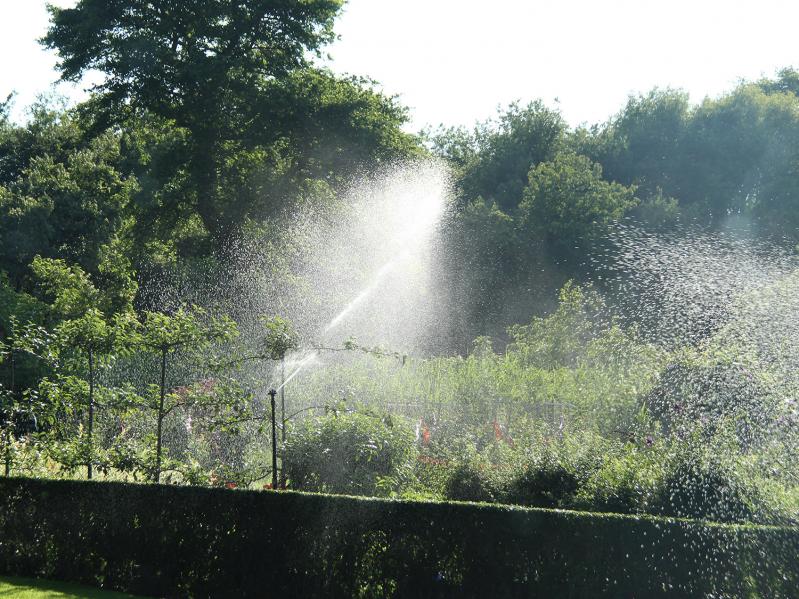According to the North American Drought Monitor, parts of the Northeast, including most of Massachusetts, New Hampshire, and Maine, are experiencing “moderate drought” right now. Texas and areas of the West Coast are under “extreme and exceptional drought conditions.” On Long Island, while we are not technically in a drought, “abnormally dry conditions” exist.
That’s why last week’s robocalls from the Suffolk County Water Authority urging residents to take “immediate steps” to conserve water are concerning. If we’re not even in a drought and water supplies are an issue, what would happen if things got worse?
The problem isn’t your teenager taking a 45-minute shower. The problem is irrigation. According to Tim Motz, the director of communications for the water authority, 70 percent of all water usage comes during the summer season. During that period, at least 50 percent of the water authority wells are used to meet peak demand, between 3 a.m. and 7 a.m. daily, when automatic sprinklers spurt awake.
“The recent dry weather has caused an extremely high demand for water,” the robocall announced. “In order to ensure there continues to be a sufficient supply of water to meet the needs of all [Suffolk County Water Authority] customers, as well as firefighters and other emergency services, please consider watering your lawn on only odd or even days, as lawns do not need daily watering.”
“It’s not that the aquifer is in danger of drying out,” said Joe Pokorny, deputy C.E.O. for operations at the water authority. “It’s that the demand is outstripping the water authority’s ability to pump fast enough.” In short, the water authority only has so much infrastructure to pump the water from the ground. The water towers, which serve as reserve tanks, should only be tapped during emergencies. Yellowing grass does not qualify.
Duane Forrester, the chief of the East Hampton Town Fire Department, said over text that while he doesn’t recall having any pressure issues over a dry spell, the water authority “does a great job of being proactive.”
“There are definitely big users out there,” said Mr. Motz. According to water authority statistics, a Meadow Lane, Southampton, residence owned by Ickenham Limited is the biggest water user in Suffolk County, draining over 16 million gallons annually. Just down the road, the second biggest user, listed as Joann Goldsman, gobbles over nine million gallons a year. A third Meadow Lane resident makes the top 10 as well: a property owned by Theodore Baum uses over five million gallons yearly.
In East Hampton town, the numbers go down, but top users still create strain. A property on Two Mile Hollow Road owned by Robert Taubman uses over four million gallons a year. But it’s not just a south of the highway issue. While 19 of the top 20 users live south of the highway, a North Haven property owner, James Christmas, uses nearly three million gallons a year to keep his Actors Colony residence green.
As a comparison, the average customer in Suffolk County uses 130,000 gallons of water a year.
While some of these numbers sound egregious, Mr. Pokorny said, it isn’t just the heavy users who create a strain on the system. “It comes back to the fact that you have thousands of people with automatic irrigation systems and they’re all overlapping. That has a very negative impact on our ability to keep pressure up and have it available for emergencies.”
“Keep it green, keep it alive,” is the mantra Mike Dwyer, a member of the Irrigation Association of New York, says he hears most from customers. Ironically, he says, the problem isn’t lack of water. It’s the opposite, too much water.
“You shouldn’t be watering the same grass every day” he said over the phone.
“Grass is part of Mother Nature. It knows we don’t get water every day.” Healthy grass, he said, has roots that reach four to six inches into the soil, allowing them to access moisture during dry spells. When grass is overwatered, the roots won’t grow more than an inch.
“Why would the grass put out that energy to grow deep roots if it doesn’t need to?” he asked. The grass becomes spoiled and reacts poorly during even a brief dry spell.
The same idea was echoed by Edwina von Gal, the president and founder of the Perfect Earth Project, which promotes toxin-free lawns and landscapes.
“The truth is that people water too often, and too little when they water,” she said. It might sound like a riddle, but she said people should, “Water seldom, but water deep.”
“Overwatering leads to a cascading effect of environmental harm,” she said.
“You need to let your plants dry out between waterings. Keeping them wet creates tick and mosquito habitat. Ticks will only live on an irrigated lawn. Overirrigation also leads to fungus problems and then people spray fungicides and pesticides,” she said.
Planting natives, as opposed to nonnative plant species that aren’t well-adapted to conditions here, could also reduce water usage. “Natives can get away with droughting a heck of a lot longer than non-natives,” said Mr. Dwyer.
He said technology could help property owners “water efficiently and appropriately.” When “smart controllers,” which monitor moisture levels and weather patterns, are installed, he said 30 to 40 percent less water is used. These systems are available now and can be added to existing irrigation setups. Mr. Dwyer said it’s important to make sure your irrigation specialist is licensed and keeping up with their education. Additionally, he suggested residents speak to their landscapers about mowing less — and maintaining a lawn with taller grass. That alone will help keep it from drying out, with the additional benefit of reducing noise pollution.
Mr. Dwyer said that Tom Tracey, a past president of the Irrigation Association, told him there is no easy solution. “People need to understand that a little brown is the new green,” he said.
It’s a perspective switch. Perfect green all the time is not only unattainable. If it drains our water supply, it can also be dangerous.
The water authority is set to switch strategies. It will move from robocalls to making in-person calls to the top 1,000 users on the East End, hoping for a change.
“We don’t have the power to force people not to water,” said Mr. Motz. They can only ask nicely.




